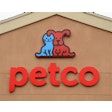
A gavel rests on top of an open law book with a justice scale and a Greek column in the background.
With no formal definition for growing-in-popularity words such as “sustainable,” being able to substantiate your marketing claims is vital to avoiding potential litigation. | DNY59 I iStock.com
Editor’s Note: This article is a “Part 2” paired with December 2022’s Pet Food Insights column, “Litigation trends in the pet food and treat industries.” This article was written by Michael Annis “with special thanks to Tori Matternas, associate attorney with Husch Blackwell.”
Log in to view the full article
Subscribe to Magazine
















